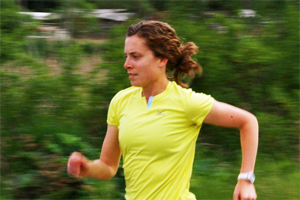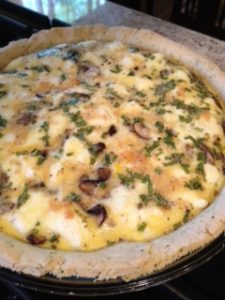ENDURrun Stage 4 – hilly 10 miler – August 15, 2012
EndurRun- Stage 4- the hills are alive with the sounds of runners.
10 mile hilly route.
We runners are all a little nutty, but we’re good people who just want to enjoy our healthy, primitive challenge. Others may not understand running, but we do, and we cherish it. That’s our only message.
— John J. Kelley
There are no people pictures with today’s post, as we finished late.
This is a sample of the course.
Jackie and Bob are still the overall winners and also now the King and Queen of these mountain stages. I will get some pictures from Chicopee (or maybe I will post a picture of the beer float from Thursday’s planning session.
Wednesday was a weird day.
1) you get to sleep in
2) you aren’t sure when and what to eat for a 6 pm start
3) you can’t (shouldn’t) have a beer in the afternoon.
Lloyd isn’t kidding when he called this the hilly 10-miler. It is truly all up and down. Maybe one little flat section, but when you start on an uphill and finish on an uphill….
We took roll call and then walked down the road to the start area. As soon as the Garmin wearers acquired satellites , Lloyd counted down and we were off. One of my roomies, Ed is now 5 minutes ahead of me after the Bechtel 30k run, so my plan was to remain close to him and also try and stay ahead of Steve (3 min behind) and Chris (he was 2 min behind) to retain my standing.
For the majority of us mid-packers, this event is not truly competitive (and we may never reach the podium, there are some fun challenges among all runners, particularly if we are within minutes of each other.
The first couple of Ks are somewhat easy before spreading out along the tiny flat section. Then we hit Wilmot Line and all those hills. Up, down, up down, up down… I flew down the hills and worked hard on the ups and tried to stretch it out on the downs. Felt good for the first few hills , then started to fall behind those ahead of me.
Horror Hill loomed large ahead of me and the other runners were strung out and looks like ants and my goal was to run ALL of the hills. I like how there were spectators here and there in addition to the great folks at the aid stations cheering us on (they were a 3km intervals) As well as all the photographers. There are so many photographers out this year. we are all going to be able to find some great running photos of ourselves this year. And we can purge the “grim” shots.
This year the runners felt like elites, as they had a pickup truck with Chris filming and two others taking pictures of us on course.I tried to cheer on all the front leaders as they flew by me tonight. Almost there now. 6K to go.
We also passed the 80 k sign (whoopee the journey is half completed)
I could still see Ed and two other runners ahead of me but regardless of how hard I thought I pushed the pace I could get no closer.
Susan’s husband Andrew was at the top of one of this hills playing his banjo riffs, which does help us get up in a happier frame of mind.
Finally the down hill… so I dropped my arms and flew down the hills running about a 4:34-38 min km. Running fast downhills means you have to focus on form and turnover. Still those nasty uphills appeared but I drove up and still looked (to me anyway) to be running .
I could see some guys struggling ahead of me. Hmmm, maybe I could catch at least one of them. One of them was walking the uphills, and I thought I was faster, but the balance of the downhill kept him ahead of me. At the 14km mark I thought , 1 km to go pick it up.. oops I got to the 15km mark and “oh yea” it is 16 k (10 miles = 16 km right)? Soon was back pavement and heading for the finish. You have to run for at least 600 metres uphill to the finish line. No way was I getting anywhere near Ed so he now has 7 minutes up on me.
Final time was 1.34:14. I it is great hanging out with all the competitors this year. All are such great people.
Chris flew through this stage and is now 5 minutes ahead of me. I am still ahead of Steve tho.
I am really looking forward to resting tomorrow. Although the day after is not as sore as some runs.
Going to Heuther Hotel get together in the afternoon. This is a micro brewery with fresh beer…..and Beer floats (with Stout, icecream and a brownie) so yes I have the gone to the dark side.
We have invited some of the other runners so will see how many show up. This is becoming a rest day tradition, and a good one at that.
Yes ,the EndurRun is such a hard life.
Friday is Stage 5 at Chicopee Ski hills – 5 loops of a 5.1 km route or about 25 kilometers.
Prior year comparisons:
2011 = 1:32
2010 = 1:32
2009 = 1:31
Let the games begin.




 The time to return to school is just around the corner and you’ve spent all summer training and chasing personal bests on the roads and trails. Did you also realize that establishing these habits is also going to make you smarter? More specifically, aerobic exercise (such as running) has been shown to have positive effects on our ability to reason and process thoughts. Dr. Paul van Donkelaar is a professor of neuroscience at the University of British Columbia Okanagan Campus in the school of Health and Exercise Sciences, met with me to discuss how exercise leads to improved cognitive functioning. Once an elite rower, Dr. van Donkelaar is now an avid runner who likes to train and race for health, to be social and enjoy the occasional beer 😉
The time to return to school is just around the corner and you’ve spent all summer training and chasing personal bests on the roads and trails. Did you also realize that establishing these habits is also going to make you smarter? More specifically, aerobic exercise (such as running) has been shown to have positive effects on our ability to reason and process thoughts. Dr. Paul van Donkelaar is a professor of neuroscience at the University of British Columbia Okanagan Campus in the school of Health and Exercise Sciences, met with me to discuss how exercise leads to improved cognitive functioning. Once an elite rower, Dr. van Donkelaar is now an avid runner who likes to train and race for health, to be social and enjoy the occasional beer 😉 Nikki Reiter holds a master’s degree in biomechanics and is a Mizuno Running Brand Ambassador and the Women’s Cross Country Running Head Coach at the University of British Columbia Okanagan campus in Kelowna, BC. She is also the Laboratory Coordinator in the School of Health and Exercise Sciences at UBC Okanagan where she facilitates undergraduate laboratory learning.
Nikki Reiter holds a master’s degree in biomechanics and is a Mizuno Running Brand Ambassador and the Women’s Cross Country Running Head Coach at the University of British Columbia Okanagan campus in Kelowna, BC. She is also the Laboratory Coordinator in the School of Health and Exercise Sciences at UBC Okanagan where she facilitates undergraduate laboratory learning.


 By: Magi Scallion
By: Magi Scallion Born in Nova Scotia and emigrating to British Columbia via Ontario and Alberta, Magi has been running the entire way. Primarily defined as a cross country ski racer, Magi has competed nationally and internationally in that sport. The highlight of her career was competing in the World University Games and the World Cup races in Canada in 2007. Cross country skiers rely heavily on running for cross training and Magi has become an accomplished trail and mountain runner, representing Canada at the World Mountain Running Championships in 2005 and the winning numerous national championships medals.
Born in Nova Scotia and emigrating to British Columbia via Ontario and Alberta, Magi has been running the entire way. Primarily defined as a cross country ski racer, Magi has competed nationally and internationally in that sport. The highlight of her career was competing in the World University Games and the World Cup races in Canada in 2007. Cross country skiers rely heavily on running for cross training and Magi has become an accomplished trail and mountain runner, representing Canada at the World Mountain Running Championships in 2005 and the winning numerous national championships medals. 




 Current Issue
Current Issue Previous Issue
Previous Issue Prior Release
Prior Release
